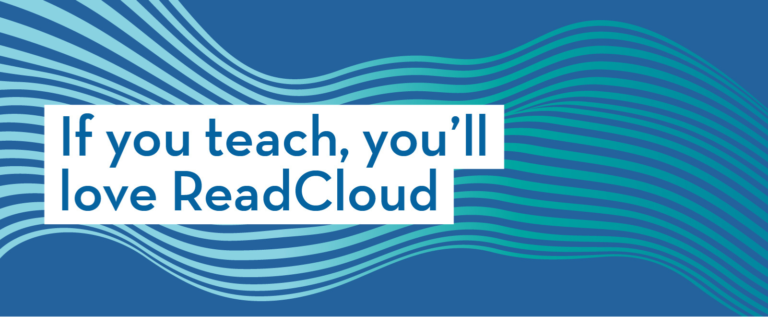Digital Natives
3 ways to integrate digital technology in the classroom
Carroll Byrne is a former Head of Department in Victoria and is an Educational Resources Specialist at ReadCloud, helping schools to understand how content can support their curriculum delivery. Carroll is currently completing a PhD in project-based learning and contemplative education and holds two Masters of Education, one in educational leadership.
In this article, Carroll explores the Australian Curriculum capability of ICT and the role of digital technologies and multimodal learning in the classroom today.
There is considerable debate about the prowess of our children with digital technologies. The Millennials, Generation Z and Generation Alpha all grew up with technology at their fingertips but are they really as savvy as we are led to believe? There is no doubt that globally, the proliferation of technologies in schools is abundant and it is no different here in Australia. But are all students considered digital natives?
Digital Capability in the Australian Curriculum
The Australian Curriculum sets consistent national standards to improve learning outcomes for all young Australians. It sets out through content descriptors and achievement standards, what students should be taught and achieve, as they progress through school. This curriculum has been under review and a number of things are changing but one thing that is for certain, the general capability of Information and Communication Technology (ICT) is not going anywhere, anytime soon. In fact, it is being reinforced and this is commencing with our young children from preparatory. The Australian Curriculum version 9.0 will include a new Digital Technologies sub-strand in primary schools that considers privacy and security. This has been added to provide opportunities for this Digital Literacy content to be explicitly taught to junior students (ACARA, 2022). With this focus on digital technology continuing to grow, how do we support our digital natives in the classroom?
The questions that arise for educators is how do we tap into these different perspectives? How do we allow for the differentiation that will be present in the capabilities of the students in learning technologies in our classrooms? How do we work with different learning styles and skills in order to meet the requirements of the general capability of Information and Communication Technology (ICT) in the revised Australian Curriculum? How do we do all of this when some of us feel we meet the description of digital immigrants more so than natives, plonked in a digital environment, left to sink or swim?
Are all students digital natives?
It appears that this is a question that is not as easily answered as one would think. Marc Prensky coined the terms digital natives and digital immigrants but quickly backpedaled stating that he meant them as metaphors. Adelle King from the Royal Melbourne Institute of Technology (RMIT) discusses this in her 2021 article.
Whether you agree or disagree with the notion of digital natives/ immigrants, one thing is important to note and that is that we cannot make assumptions about either. People demonstrate different capabilities based on exposure. Confidence, socio-economic status and access are all predominant factors likely to impact digital skills. Dorney (2017) from the Australian HR Institute offers an additional argument that asserts that simply because younger generations might prefer to communicate digitally, because of their exposure, this does not mean they have greater expertise. As educators it is important that we give young people the opportunities to experience technology in the classroom, meeting the requirements of the Australian Curriculum. Here are a few ways you can work with technology in the classroom, to build up a student’s digital capabilities: .
Example 1: Virtual excursion or Digital Field Trip
With distance learning happening across Australia in 2020 and 2021, a way for students not to miss out on an excursion was the virtual excursion or digital field trip.
For example; Sydney Living Museums Virtual Excursions can bring their museum programs into your classroom. These bespoke programs connect your class live with a museum educator. The presentations are interactive and focus on specific curriculum content, concepts and skills; a great tool for humanities classrooms.
Google Streetview and similar apps also allow students to virtually explore parks, forests, national and international landmarks from around the world. students can virtually experience the view from the Statue of Liberty or hike through the Grand Canyon.
Both of these tools amongst many others can get students excited about extending learning beyond the page.
Example 2: Integrate social media safely
Contemporary students spend a lot of time on social media and are very adept at it. What if there was a safe and easy way to incorporate social media in your classroom? There is Edmodo!
Edmodo allows the teacher to control who accesses the platform and students can then send messages and share class materials. This makes learning accessible anywhere and taps into prior knowledge our students already have.
Integrating social media into your classroom is among the most innovative ways to use technology and connect students to the curriculum.
Edmodo is a safe way to create a group specifically for your students. This technology allows them to feel confident in a unique format.
Example 3: eBooks
We also can’t forget to mention the power of eBooks and digital texts. Digital textbooks are another way students can interact with technology in the classroom in a productive way.
In a controlled and secure environment, students can access tools to help them interact and engage with Shakespearean plays, dive deeper into the nature of storms and clouds or access videos and interactive content on how to solve difficult math problems.
These are just a few examples that are available, there is a plethora of multimodal activities to experience.
Technology is here to stay
Whether you love it or hate it, there is no doubt that technology is here to stay. Our students embrace it and we are required to engage with it in our roles. The Australian Curriculum, Assessment and Reporting Authority (ACARA) asserts that as educators it is important that we give young people the opportunities to experience technology in the classroom in order to meet the requirements of the Australian Curriculum.
The recently endorsed, Version 9.0 of the Australian Curriculum maintains that students require essential technological knowledge, understanding and skills in order to be creative individuals, successful lifelong learners and active, informed members of the community.
So, regardless of your capabilities, whether you are a digital native or a digital immigrant it is time to consider how you can incorporate digital technologies in your classroom.




